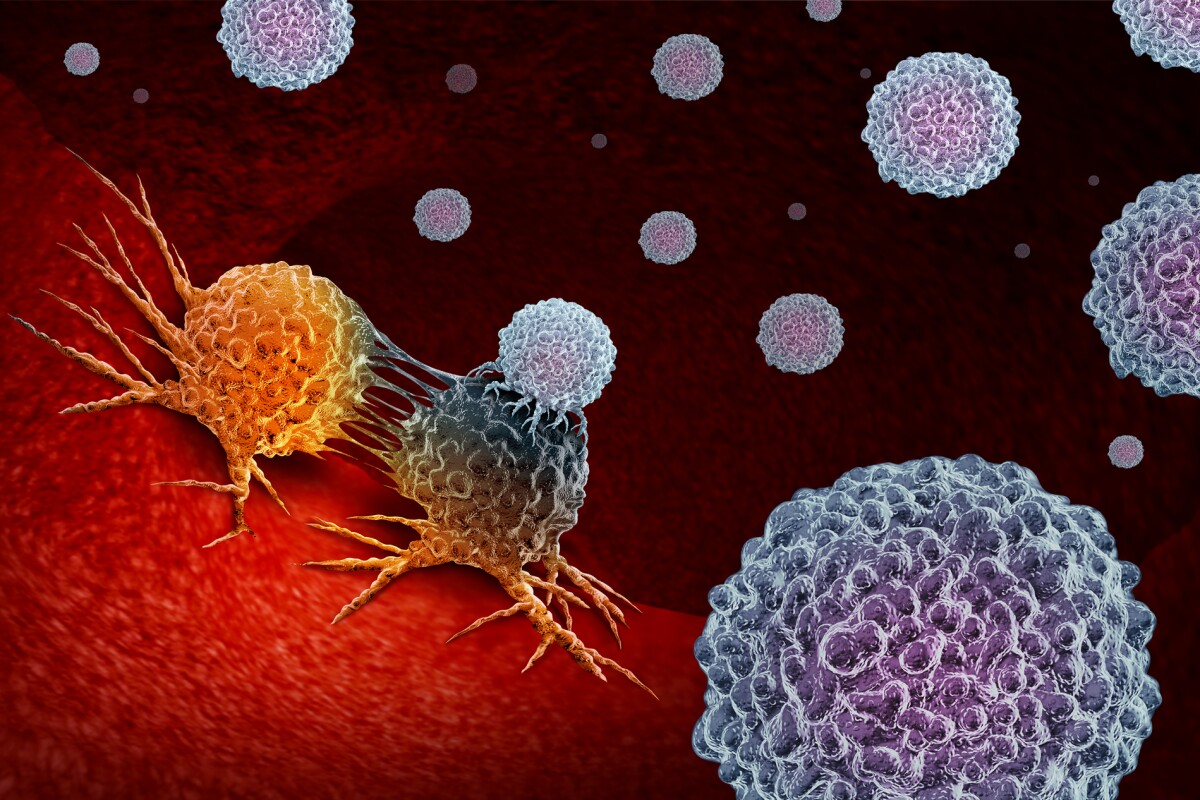
It is piossible now to take direct advantage of the natural acidity of a cancer cell to attack it. Pretty neat.
we are seeing really novel protocols that can really work well.
All this leads to thinking that cancer may well be truly eliminated once and for all. Most are caused by toxins somewhere along the line. Yet emergence can be a lifetime later. For most smokers that can be fifty years in.
Homing missile molecule eradicates even advanced cancers in mice
October 19, 2022
https://newatlas.com/medical/homing-missile-molecule-eradicates-advanced-cancers/?
A new cancer treatment pairs an acidity-seeking molecule with an immunotherapy drug
Researchers at Yale and the University of Rhode Island (URI) have demonstrated a new technique to fight cancer by attaching immunotherapy drugs to a molecule that seeks out the acidic environment of cancer cells. In tests in mice, a single dose was enough to eradicate even advanced tumors.
Our greatest weapon against cancer – and indeed all disease – is our immune system, but even it needs a helping hand sometimes. Immunotherapy provides that helping hand, with one method being what are called immune checkpoint inhibitors. These drugs effectively take the natural brakes off the immune response, allowing it to battle against cancer for longer.
As promising as these drugs seem so far, they don’t work on “cold” tumors that have little immune activity to start with. So another type of drug known as STING agonists are designed to fire up these cold tumors into hot ones that are more receptive to immunotherapy. But these also have their drawbacks – namely, it’s hard to target them to cancer cells.
And that’s where the new study comes in. The researchers from Yale and URI used a molecule called pH-low insertion peptide (pHLIP) to guide the drug to where it needs to go. pHLIP is drawn to acidic environments, conveniently like the kind that cancer makes around itself.
“When pHLIP encounters a cell membrane with a neutral pH, it will sit on the surface briefly and then pull away,” said Donald Engelman, co-author of the study. “But if it’s in an acidic environment, then the peptide folds into a helix, crosses the cell membrane and stays there.”
An untreated tumor (top left) is highly acidic, as seen with its fluorescence profile (top right). Within days of the new treatment however, the tumor (bottom right) starts to shrink and its acidity goes down (bottom right)
University of Rhode Island
The team coupled pHLIP to STING agonists, so that the former carries the latter to cancer cells and helps them inside to get to work. And tests in mice proved promising – the researchers administered pHLIP-STING to 20 mice with small colorectal tumors and found that after a single injection, the tumors disappeared entirely in 18 mice within a few days. In another group with larger tumors, seven out of 10 mice saw their tumors disappear completely.
By comparison, another group of 10 mice received just STING without the guidance of pHLIP. Tumor growth slowed slightly in all 10, but tumors remained.
The treatment even seemed to have a long-lasting effect. The team injected new cancer cells into treated mice that had been tumor-free for 60 days – and no new tumors developed, indicating an immune memory had formed.
While the technique sounds promising, the usual caveats apply – the results of animal tests don’t always carry across to humans. Far more work needs to be done before any potential treatment based on pHLIP-STING could find use.
The research was published in the journal Frontiers of Oncology.
No comments:
Post a Comment